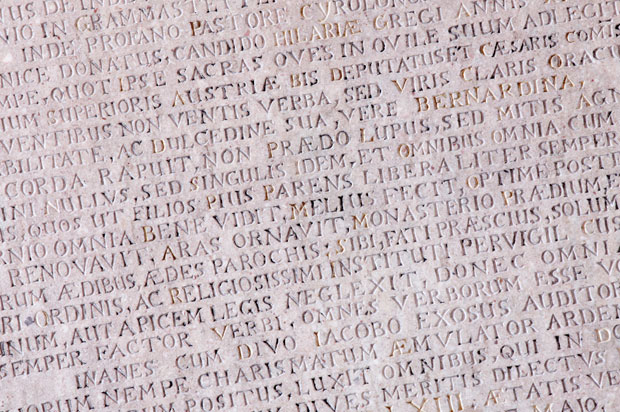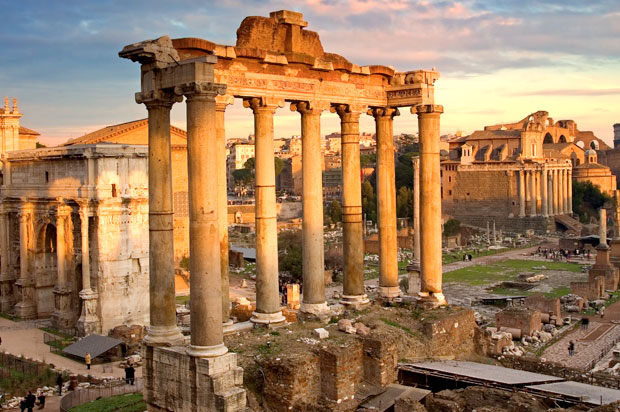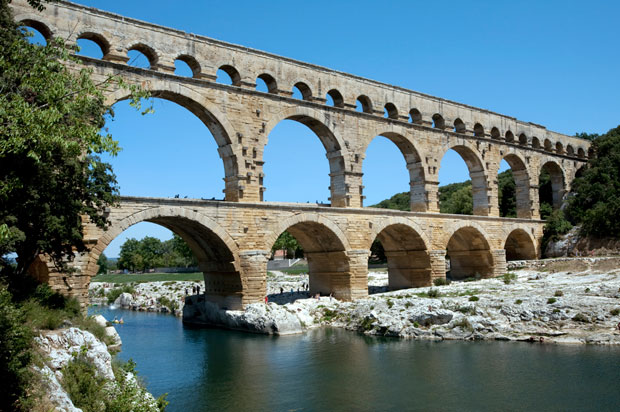3.Newspapers

2.Concrete

Many ancient Roman structures like the Pantheon, the Colosseum and the Roman Forum are still standing today thanks to the development of Roman cement and concrete. The Romans first began building with concrete over 2,100 years ago and used it throughout the Mediterranean basin in everything from aqueducts and buildings to bridges and monuments. Roman concrete was considerably weaker than its modern counterpart, but it has proved remarkably durable thanks to its unique recipe, which used slaked lime and a volcanic ash known as pozzolana to create a sticky paste. Combined with volcanic rocks called tuff, this ancient cement formed a concrete that could effectively endure chemical decay. Pozzolana helped Roman concrete set quickly even when submerged in seawater, enabling the construction of elaborate baths, piers and harbors.
1.Aqueducts

The Romans enjoyed many amenities for their day, including public toilets, underground sewage systems, fountains and ornate public baths. None of these aquatic innovations would have been possible without the Roman aqueduct. First developed around 312 B.C., these engineering marvels used gravity to transport water along stone, lead and concrete pipelines and into city centers. Aqueducts liberated Roman cities from a reliance on nearby water supplies and proved priceless in promoting public health and sanitation. While the Romans did not invent the aqueduct—primitive canals for irrigation and water transport existed earlier in Egypt, Assyria and Babylon—they used their mastery of civil engineering to perfect the process. Hundreds of aqueducts eventually sprang up throughout the empire, some of which transported water as far as 60 miles. Perhaps most impressive of all, Roman aqueducts were so well built that some are still in use to this day. Rome's famous Trevi Fountain, for instance, is supplied by a restored version of the Aqua Virgo, one of ancient Rome's 11 aqueducts.
审校:省略珺 编辑:橘子











